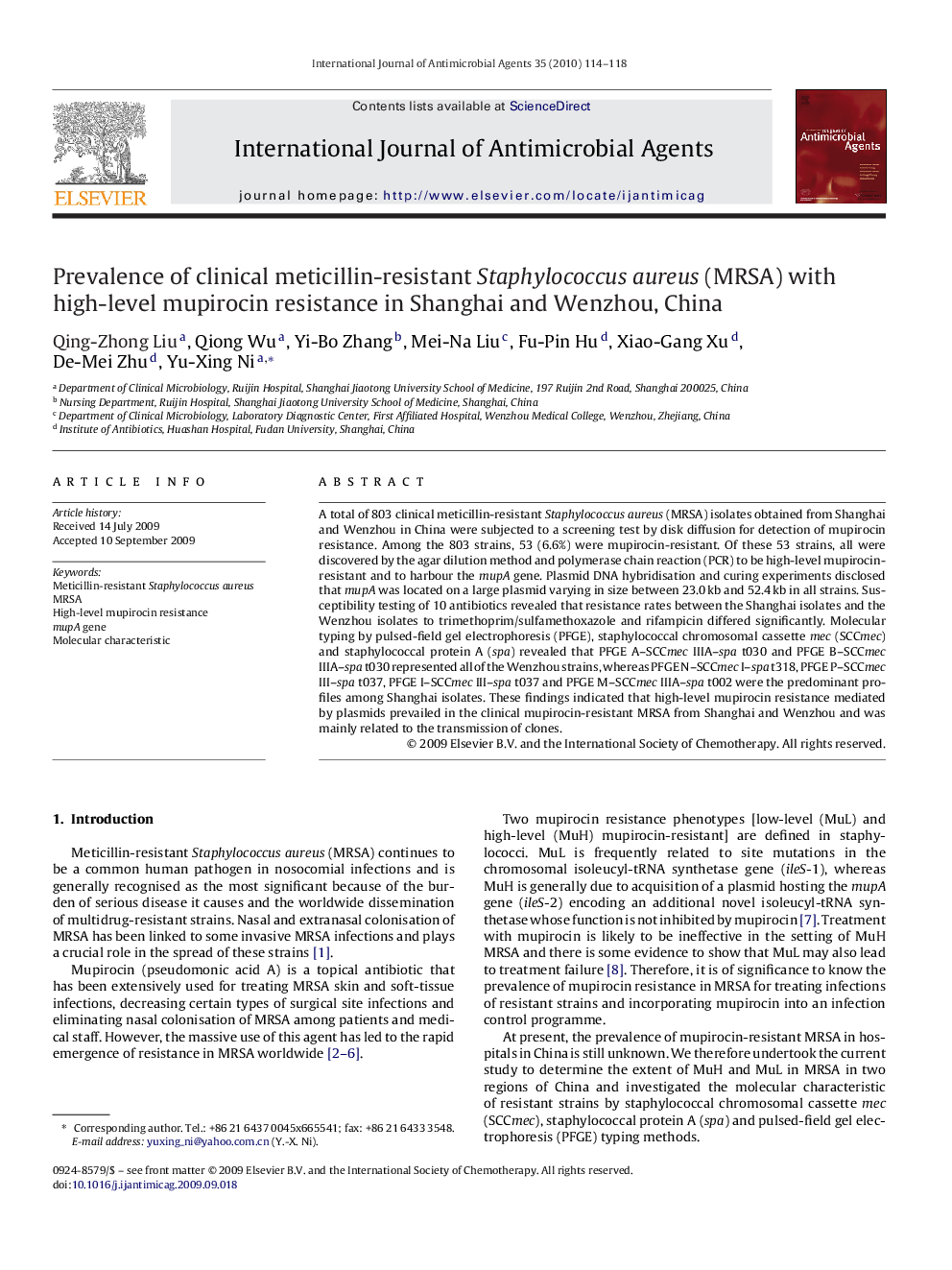| Article ID | Journal | Published Year | Pages | File Type |
|---|---|---|---|---|
| 3359737 | International Journal of Antimicrobial Agents | 2010 | 5 Pages |
A total of 803 clinical meticillin-resistant Staphylococcus aureus (MRSA) isolates obtained from Shanghai and Wenzhou in China were subjected to a screening test by disk diffusion for detection of mupirocin resistance. Among the 803 strains, 53 (6.6%) were mupirocin-resistant. Of these 53 strains, all were discovered by the agar dilution method and polymerase chain reaction (PCR) to be high-level mupirocin-resistant and to harbour the mupA gene. Plasmid DNA hybridisation and curing experiments disclosed that mupA was located on a large plasmid varying in size between 23.0 kb and 52.4 kb in all strains. Susceptibility testing of 10 antibiotics revealed that resistance rates between the Shanghai isolates and the Wenzhou isolates to trimethoprim/sulfamethoxazole and rifampicin differed significantly. Molecular typing by pulsed-field gel electrophoresis (PFGE), staphylococcal chromosomal cassette mec (SCCmec) and staphylococcal protein A (spa) revealed that PFGE A–SCCmec IIIA–spa t030 and PFGE B–SCCmec IIIA–spa t030 represented all of the Wenzhou strains, whereas PFGE N–SCCmec I–spa t318, PFGE P–SCCmec III–spa t037, PFGE I–SCCmec III–spa t037 and PFGE M–SCCmec IIIA–spa t002 were the predominant profiles among Shanghai isolates. These findings indicated that high-level mupirocin resistance mediated by plasmids prevailed in the clinical mupirocin-resistant MRSA from Shanghai and Wenzhou and was mainly related to the transmission of clones.
